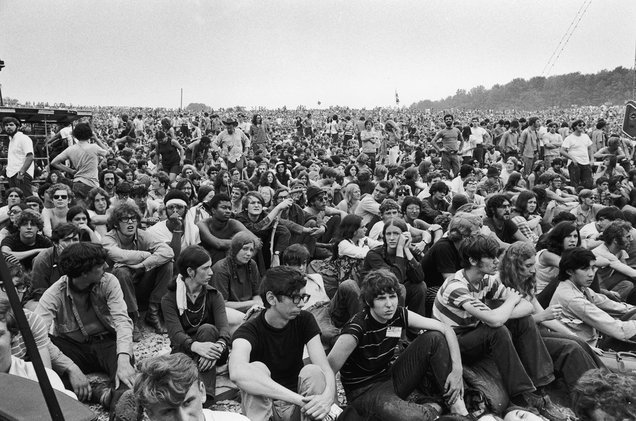50 years later Woodstock, 1969, continues to be an inspiration for all concert-goers

About half a million people gathered in the rain to witness what would become the best concert in the history of live music.
The world came at a standstill between August 15 - 18, 1969, when over 400,000 youths came together to what would be known as the most peaceful rock concert in the history, Woodstock 1969. The three days saw a chain of legendary performers such as Jimi Hendrix, The Who, Joe Cocker, and Richie Havens take over the stage as the young people who were at that time rebelling against the Vietnam War took their seats on the swampy grounds of a 600-acre dairy farm. 50 years after everything that happened during that Summer of Love, today the young generation of the world needs a similar festival more than ever.
Also known as An Aquarian Exposition: Three Days of Peace and Music, the Woodstock Festival was an extension of the on-going rebellion by a generation who had involved themselves with illegal drugs, sexual activities and when music revolutionized to create the sound of the youth- what we today know as Rock ‘n Roll. In spite of so many people coming together, not a single report on any violent act was reported from the festival. Held at Max Yasgur’s dairy farm in the town of Bethel, outside White Lake New York, the festival was organized by four young men, John Roberts, Joel Rosenman, Artie Kornfeld, and Mike Lang, the oldest of whom was barely 27-years-old back then.
Nothing of this proportion had happened in history before. (Google Images)
The whole idea of the festival was rooted in making more money, when Roberts who was an heir to a pharmaceutical fortune, along with his friend Rosenman were looking for a way to invest money in making profit. They placed an ad in The New York Times, which said, “Young men with unlimited capital looking for interesting, legitimate investment opportunities and business propositions”, and soon after they met their other two companions, Kornfeld and Lang. The latter two originally wanted to build a recording studio in Woodstock but soon the idea metamorphosed into a two-day rock concert where initially only 50,000 people were supposed to come. It was basically a way to earn the money to build that studio.
They managed to find a location in Wallkill and tickets were printed between the price range for $7, $13, and $18 that could be purchased in selected stores and on mail. Although they also brought in food business, signing musicians and security, not a penny was spent in making merchandise to gain more than what was needed. However, things were soon about to fall apart. Hippies, or the Flower Generation, was strictly banned in Wallkill as local residents objected to the presence of a bunch of what they assumed to junky teenagers. A law was passed on July 2, 1969, that banned all hippies from the vicinity and this caused a panic among the organizers. With this ban sale of tickets went down, which meant paying such high-class musicians would be difficult. Fortunately, Max Yasgur came up to offer his farm but with the sudden shift in location there was financial setback and now the organizers were left with a choice- either build the stage or a fence to guard the area...and quite knowingly they went with the former.
Legends such as Jimi Hendrix came forward to play at the concert. (Google Images)
By August 13, approximately 50,000 people had started camping near the area and with no gates soon a large number of people began to pour in. There was certainly no way to make all those people leave the ground, purchase a ticket, and get back for the concert. Instead the concert was now open for all and declared free. Although declaring the concert free meant a massive loss for the organizers, yet the news of a free concert spread nationwide, and thousands began to pour in to witness what would become the greatest concert in history. With half a million people turning in organizers had to arrange for helicopters to help performers reach the stage. Although by the end of the festival organizers were left with a debt of nearly $1 billion, the Summer of Love will forever be remembered for its peaceful gathering of youth below 30-years who attended the three-days concert in an unsupervised farm, their feet soaked in swamp, with barely any food available, and yet carrying a non-violent gathering that the world has never seen since.















































